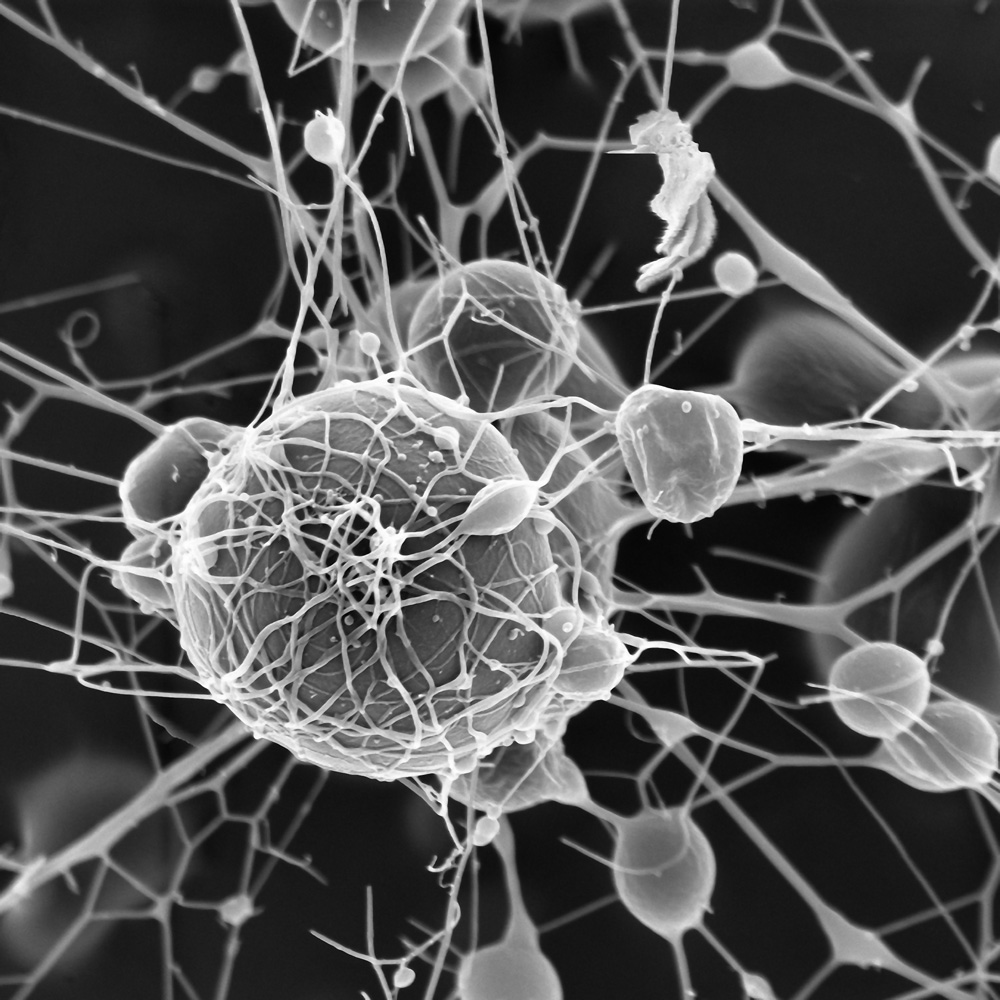Skin to nerve cells
Nanofibres of chitosan, derived from the exoskeletons of crustaceans like crabs, lobsters and prawns. High surface area and re-usability make these nano-fibres excellent supports for metallic catalysts in chemical reactions.
Imaged using scanning electron microscopy by Michael Bradshaw from the University of Western Australia.
Size: each fibre is about 80 nanometres wide.
These fibres have been electrospun to make these networks that support palladium catalysts in Heck reactions. The development of better and more efficient support structures was the focus of this work. Recent studieshave revealed that various drugs such as antibiotics, chemotherapeutic agents, proteins and anti-inflammatory analgesic drugs can also be successfully loaded onto electrospun chitosan nanofibers for better treatments.
